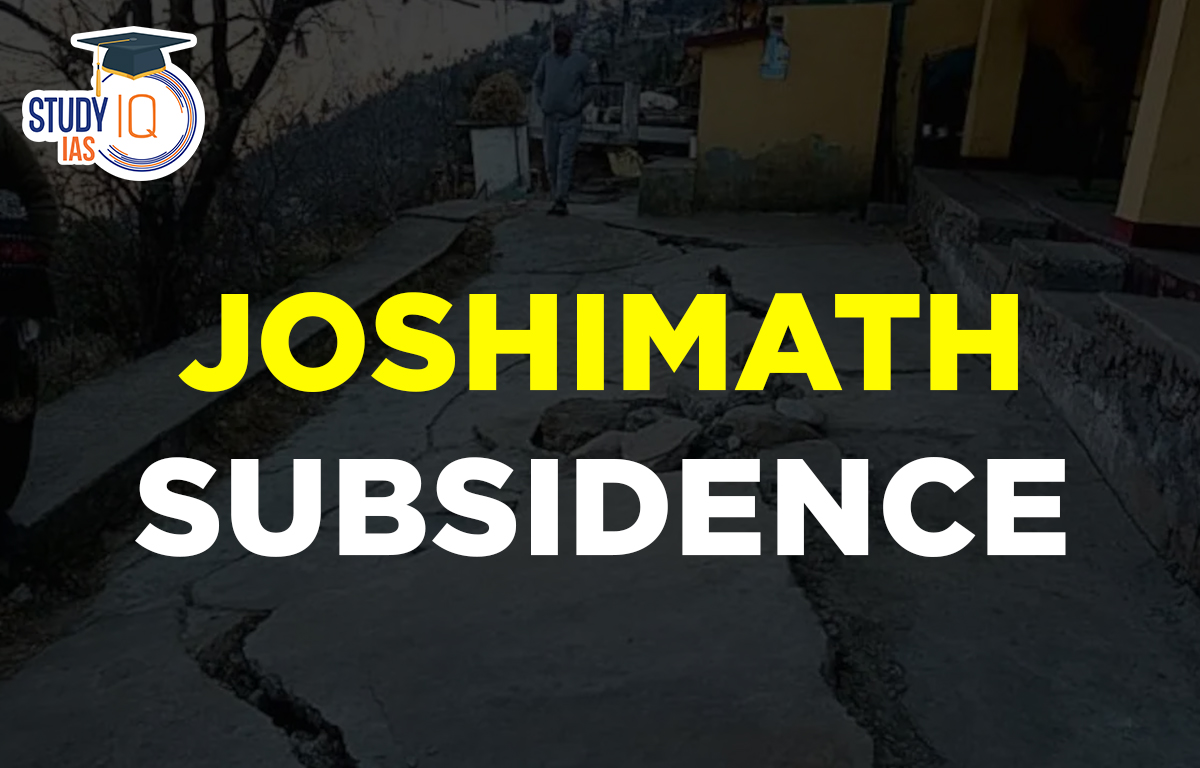Table of Contents
About Joshimath
- It is believed to be the winter seat of Lord Badrinath, which is brought down to Vasudeva temple in Joshimath every winter.
- It is also the gateway to the Sikh holy shrine Hemkund Sahib.
- It also houses one of the major military bases near India’s border with China.

About the Subsidence in Joshimath
- Factors which might have led to subsidence at Joshimath:
- Joshimath’s vulnerable foundations as it was developed on the debris of a landslide triggered by an earthquake more than a century ago.
- Its location in seismic zone V, which is more prone to earthquakes besides gradual weathering and water percolation which reduce the cohesive strength of the rocks over time
- The frequent flow of the Himalayan rivers and heavy rainfall which caused flash floods in the Rishi Ganga and Dhauliganga rivers last year may also have worsened the situation.
- Joshimath being a gateway to popular destinations, has resulted in Haphazard construction activities in the area, followed by increased population pressures due to tourism.
- Vibrations caused by development work for National Thermal Power Corporation’s Tapovan Vishnugad Hydro Power Project, which has been undergoing beneath the town.

- Measures Needed
- A high-level expert committee has been formed to examine the current situation.
- Evacuation of people in affected areas to safety is being taken up on a priority basis.
- Micro zonation of the town, replanning of its drainage system and rainwater outlets, besides assessment of rock strength among others should be undertaken.
- Assessment-based development needs to be focused on in the Fragile Himalayan Ecosystem.
What is Land Subsidence?
- Land Subsidence is the sinking of the ground because of underground material movement—is most often caused by the removal of water, oil, natural gas, or mineral resources out of the ground by pumping, fracking, or mining activities.
- It can also be caused by natural events such as earthquakes, soil compaction, glacial isostatic adjustment, erosion, sinkhole formation, and adding water to fine soils deposited by wind.


 Daily Quiz 19 April 2025
Daily Quiz 19 April 2025
 Vehicle-to-Grid (V2G) Technology and its...
Vehicle-to-Grid (V2G) Technology and its...
 Waqf Act (Amendment) 2025: Key Highlight...
Waqf Act (Amendment) 2025: Key Highlight...





















